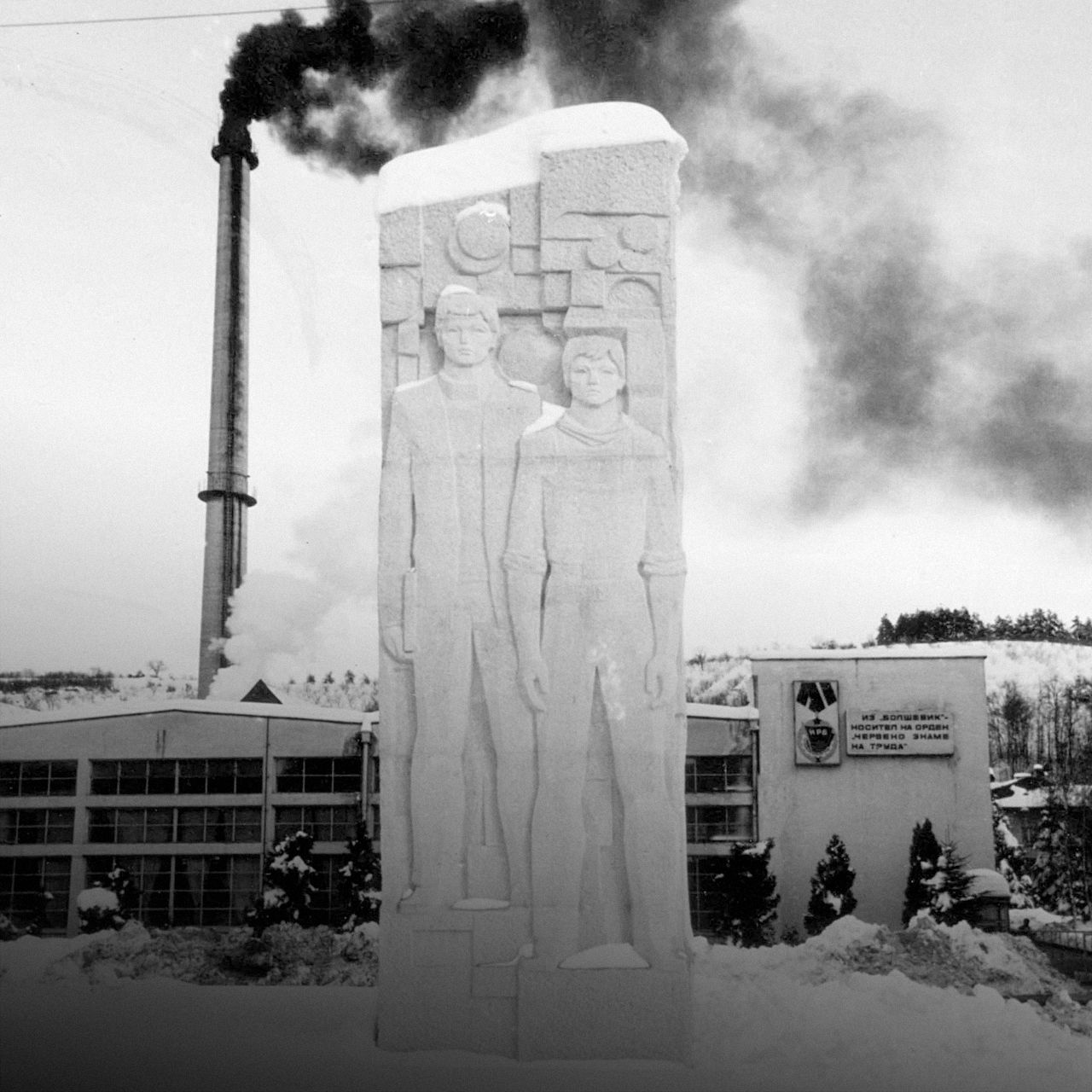INDUSTRY
Industry may be understood as the building of its main production factory and, historically, companies would represent its economic and technological power through advertising.
If today most industries are operating as networks connecting factories in several countries, how could we represent them?
1. Poster for one of the oldest wool textile factories in Gabrovo. “First royal court factory for pure woolen fabrics” (excerpt from the text). His owner also constructed the first privately owned water power plant. Interactive Museum of Industry, Gabrovo, Bulgaria.
A standing chimney affirms the power of industry over the landscape and can be read as a modern monument punctuating European territories, like other sculptures and artistic elements did in the past. How do you read the smoke coming out of the chimney, how is the European industry dealing with sustainability nowadays?
2. Monument near the entrance of the first factory for metal working tools, Period of State Socialism, ca. 1970. Interactive Museum of Industry, Gabrovo, Bulgaria.
Industry is a socio-economic activity that has been changing the planet and the human societies in the last two centuries. Therefore, industry is a systemic activity well known to European societies and to the, so called, “developed countries”. Industrialization has extensive impacts on the globe, and they keep growing – remember, to some extent the definition of “non-developed countries” coincides with the non-industrialized ones.
To provide the “Press Here” definition of industry invites a wide spectrum reading of its influences on the planet and the global economy, from the transformation of natural sites into industrial landscapes, from the massive extraction of natural resources to be used as raw materials for production, to the necessary transport and distribution of goods, materials, and sources of energy.
Industry shapes our society and built environment, from industrial buildings to housing and industrial settlements: did you know that the industrial wooden euro-pallet is the internal module of a sea-container, which is the size of a truck, the width of a road, the module of a sea cargo ship? This network system is homogenised to help the global circulation of industrial products, those which brought comfort to life in capitalist societies.
Throughout the 20th century the awareness of the right to work and central role of workers and their fights, have led to the fundamental principles and rights at work. From paid work, education of workers and young professionals, lifelong learning to family protection, childcare, annual leave and health & safety measures, workers have been organising through affirmative action, collective bargaining and campaigns.
Industry is therefore a cultural and social construction which overcomes its economic and financial factors and outcomes. The influence of industry ranges from corporate identity to family identity, collective memory and, therefore, results in industrial heritage.
More and more, the question of sustainability of this mode of human economic development is questioned and the climate and ecological crisis influences of extraction, transformation, and distribution. In addition, the waste generated by industry and then going to landfill became a global human problem,

